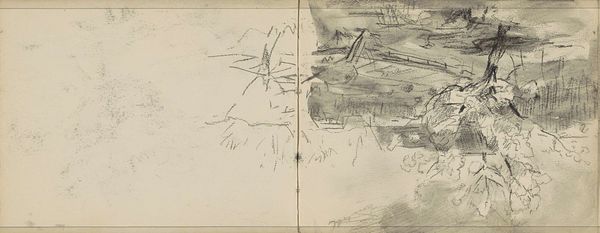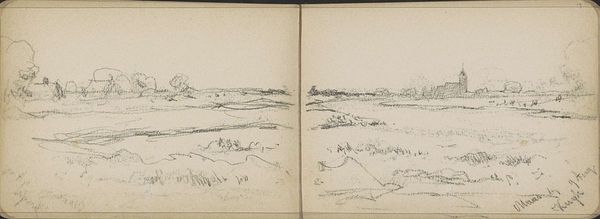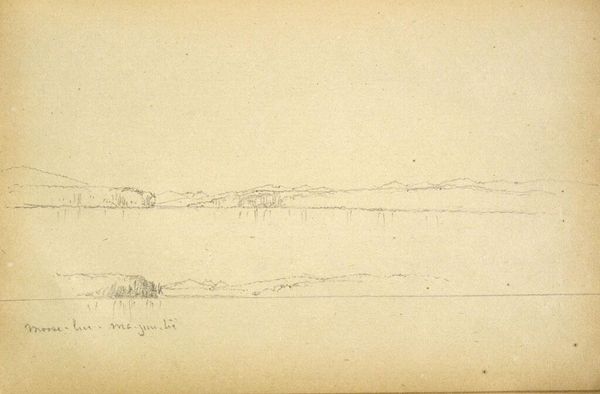
drawing, pencil
#
drawing
#
light pencil work
#
impressionism
#
pen sketch
#
incomplete sketchy
#
hand drawn type
#
landscape
#
personal sketchbook
#
ink drawing experimentation
#
pen-ink sketch
#
pencil
#
pen work
#
sketchbook drawing
#
sketchbook art
#
realism
Copyright: Rijks Museum: Open Domain
Curator: This delicate drawing, "Landschap met bomen en struiken," or "Landscape with Trees and Shrubs," is attributed to Anton Mauve, dating from between 1848 and 1888. It resides here at the Rijksmuseum. Editor: My first impression is of a whispered scene, almost a memory. The pencil work is so light, it feels like catching a fleeting glimpse of a landscape. Curator: Mauve, of course, was a significant figure in the Hague School, known for his atmospheric landscapes. Consider his position at the time: mid-to-late 19th century, a period of significant urban expansion. Sketchbooks offered artists a direct connection with the natural world increasingly under threat. Editor: Precisely. You sense that immediacy. This isn't a formal composition destined for the salon. It’s raw observation. I wonder if these rapid lines served not only as an artistic study, but also symbolized a longing for the quiet of rural life. Did such drawings hold any subversive potential for people weary of societal turmoil and city life? Curator: That’s a very interesting question, considering the growing Romanticism of the time! As we examine this piece, you can discern, even in its modest scale, that Mauve uses light and shadow to construct a believable space, from the rough foliage to what appears as a distant horizon line. It's the kind of scene anyone could recognize. Editor: There’s a beautiful incompleteness to it, too. These sketched lines and shapes evoke the idea of an unfolding landscape that resists final definition. Do you feel the artist's commitment in the details, despite the rapid execution? Perhaps Mauve had no intentions for anything grand, just capturing the intrinsic spirit and natural grandeur present in what some might think otherwise uninspired? Curator: Indeed, this speaks to the value placed on direct observation and feeling, core values in impressionist art! He captures an immediate expression rather than a literal depiction. In Mauve’s day, landscape painting often served as an ideal of national identity and aesthetic progress. Editor: So this drawing presents a somewhat scaled-down, and personal expression? With these sketches that don’t aim to be polished, can we understand how the politics and social changes around Mauve’s landscape might be felt on a more immediate emotional level? Curator: Yes, exactly. I see this landscape as being deeply intimate. It’s this deeply personal aspect of this image, the feeling behind a sketch. Editor: A quiet yet radical act. It will be something to consider further for our audience!
Comments
No comments
Be the first to comment and join the conversation on the ultimate creative platform.













